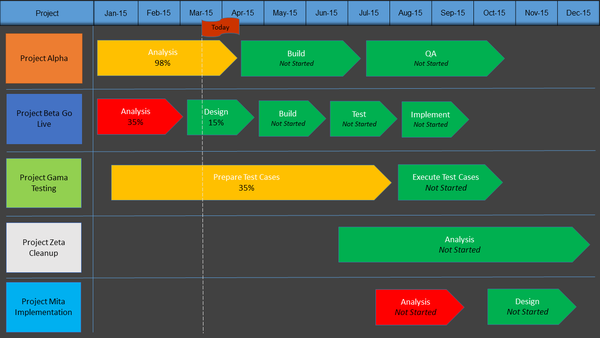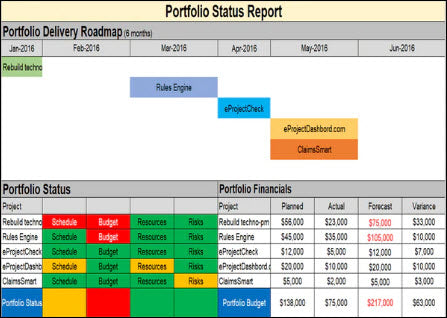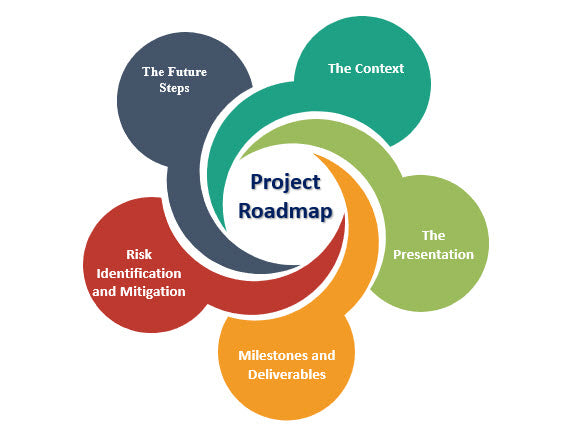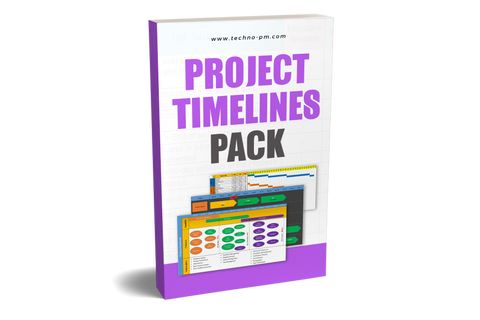Project Roadmap: How To Fit Road Mapping Into Your Management Process ?
A project roadmap is a guideline that provides a graphical strategic overview of project objectives, schedules, deliverables, resources, and the deadline. Project managers can use it to communicate the project plan to stakeholders and keep track of the project’s progress. A project roadmap not only answers the reason behind pursuing the project but also wireframes how the project will proceed.

A project roadmap essentially consists of the following information :
- Project objective
- Short-term and long-term goals
- A time-sensitive schedule
- Internal resources and outsources
- Important developmental milestones and deliverables
- Risks and issues
- Dependencies
Role of Project Managers in a Project Roadmap
Project managers are responsible for leading a project's overall development. Therefore, they need to leverage their expertise in daily planning, scheduling, approving, resourcing, tracking, and communicating project progress. While the minute issues and details of the project execution seem intimidating and confusing, project managers keep an eye on the holistic progress of the project using a project roadmap.
Why is a Roadmap Important?
When project managers get entangled in the tiny details of a project, they find it challenging to communicate the overall project development to the stakeholders. A project roadmap helps you get a macro-level view of the project’s progress which helps develop a more comprehensive project plan. A project roadmap can help manage the project in the following ways:
- Communicate Goals to the Team- A project roadmap visually outlines the goals and objectives of a project. It enables the team to quickly identify milestones and prioritize their tasks. It provides a bird’s eye view of the project that helps estimate the time to complete each phase. It keeps the team focused and reduces distraction.
- Communication with Stakeholders- Project roadmaps are the Bible for project managers to communicate the project development to the stakeholders. Stakeholders remain well-informed about the project’s plan and progress and what modifications can be reasonably incorporated without harming the deadline. This leads to rational expectations that reduce miscommunication and deviation from the project path.
- Prioritization of Tasks- Project roadmaps provide insight into the tasks to be accomplished in their order of priority. This enables the project manager and team members to strategize the plan and commit to the set goals in a streamlined manner.

Project Roadmap Examples
The type of project roadmap varies according to the situation and phase in which the project lies. Though the presentation of the roadmap will change based on its type, its primary motto of conveying the progress and revisions of the project in a simplified way remains the same.
- Project Initiatives Roadmap- A project initiatives roadmap defines where the project is destined to go and how the project manager plans to take it there. It describes the team, budget, scope, time, and resources the project demands. The initiatives roadmap involves project planning, scheduling, strategic architecture, cost-saving efforts, and initiative planning to satisfy the stakeholders’ expectations.
- Activities Roadmap- This version of the project roadmap exhibits minute activity details of the project. It is beneficial for tracking project development and communicating the stepwise progress of specific sprints. It also highlights upcoming deliverables and assists in making decisions about which task to prioritize.
- Gantt Chart-Style Roadmap- This roadmap efficiently plans work across teams and vendors. It is used to track execution phases, deadlines, dependencies, and milestones and can also be integrated to project objectives to answer the “why” behind the project.

Project Roadmap in 5 Steps
While the structure of a roadmap will vary according to individual projects, the general framework of a project roadmap can be created with the following five simple steps:
- The Context- The project roadmap revolves around the “why” of the project objectives, goals, vision, and strategic framework. Project managers consult with the stakeholders and clients, research and analyze market trends, evaluate business data, and validate the project approach.
- The Presentation- Project roadmaps are designed to make the project details easy to understand and digest. Therefore, they should contain visual information like graphs, charts, or flow diagrams that will convey the project development to the stakeholders in a simple style.
- Milestones and Deliverables- Project roadmaps highlight the main deliverables and project outcomes from which the essential milestones can be ascertained. The presentation should be lucid for the audience to relate to the strategic value of achieving each milestone.
- Risk Identification and Mitigation- A roadmap focuses on the highest risks of a project, including project risks, market risks, organizational risks, etc., and shows the strategic plan to mitigate them. This showcases the efficiency of the project manager in combating unprecedented challenges that might otherwise lead to project failure.
- The Future Steps- A project roadmap not only defines the overview of the project but also infers the increasing organizational value after its successful completion. It also draws a bigger picture about how the project may boost organizational performance and add to its glory.

How To Fit Road Mapping Into Your Management Process
A roadmap needs regular updating throughout the project development, though it can be incorporated into the different phases of project execution in the following way:
After project approval, the roadmap can assemble project ideas, saving time and effort. Moreover, it comes in handy during the project initiation depicting the team, budget, resources, and time.
- During project planning, the roadmap helps focus on the objective and align the action plan to the business goal. Once the project enters the execution phase, the map is used to communicate with the team members, stakeholders, and vendors.
- Throughout the project lifecycle, the roadmap prioritizes tasks and motivates the team members to streamline the workflow.
- Finally, the project is closed by updating the roadmap with the outcomes and future actions to perceive the big picture. It is used as a positive testimonial to stakeholders that promises to complete the upcoming modifications of the project.
Conclusion
A project roadmap efficiently guides the project manager through the lifecycle and communicates effectively with stakeholders and team members. In addition, it is a progress tracker and keeps the team motivated and focused on the project path.



